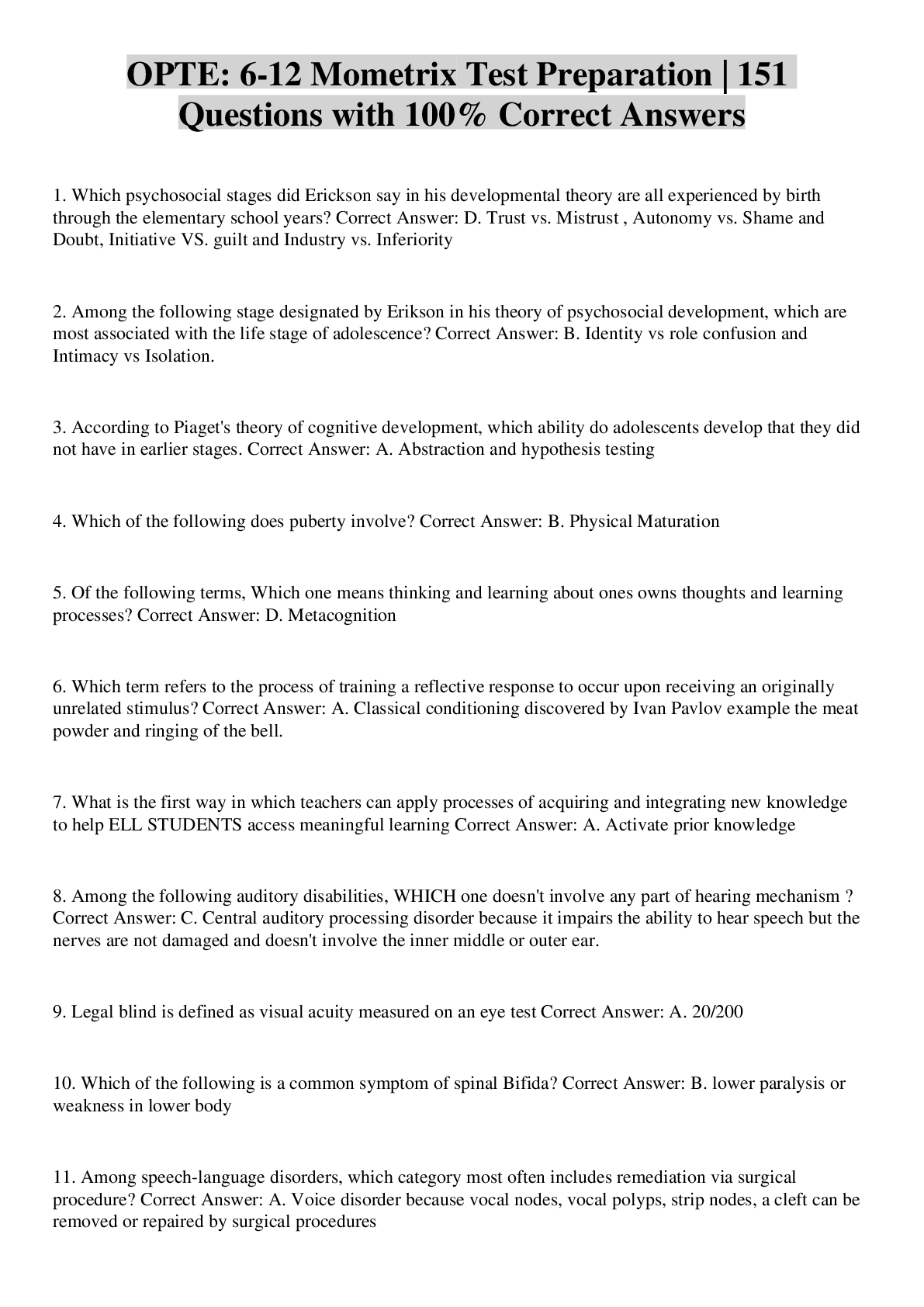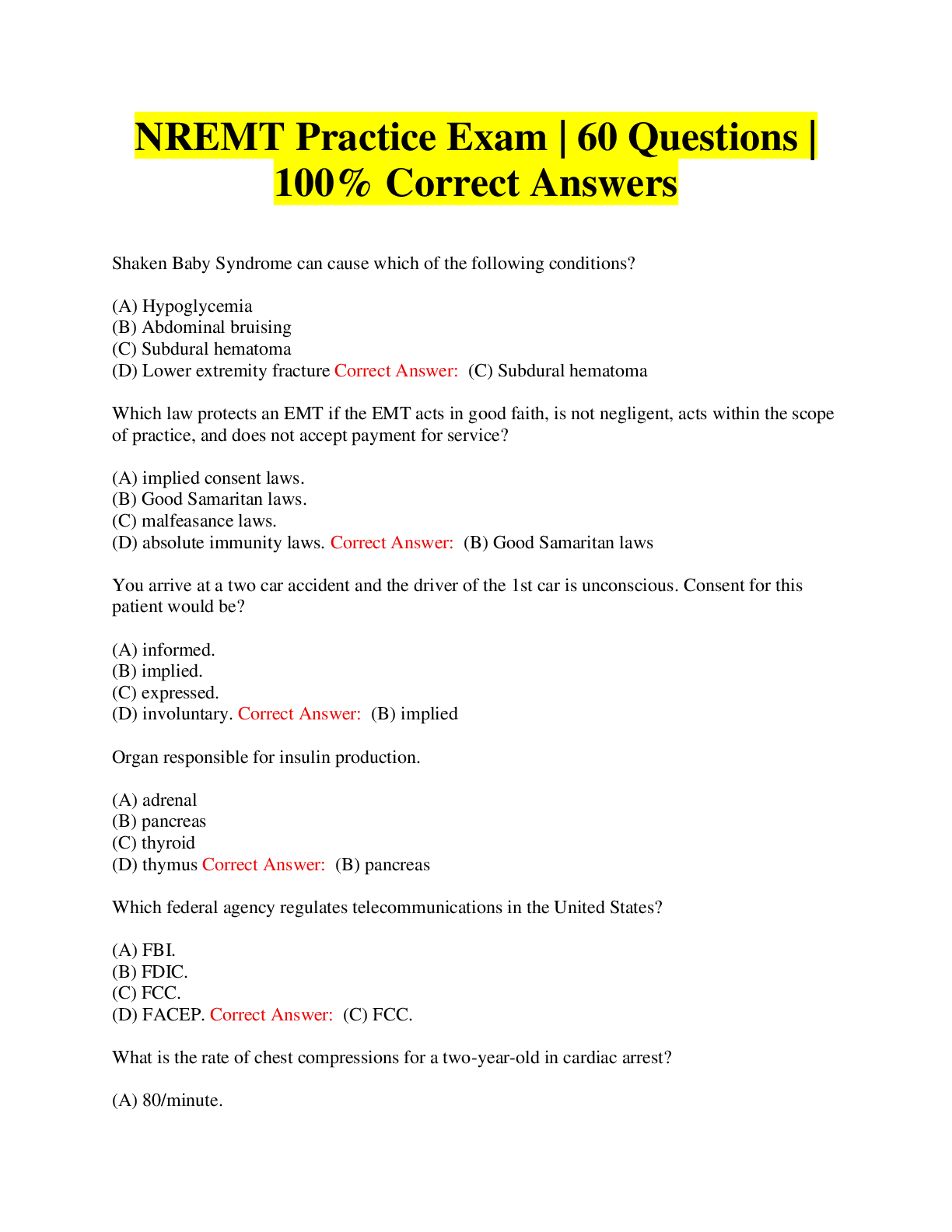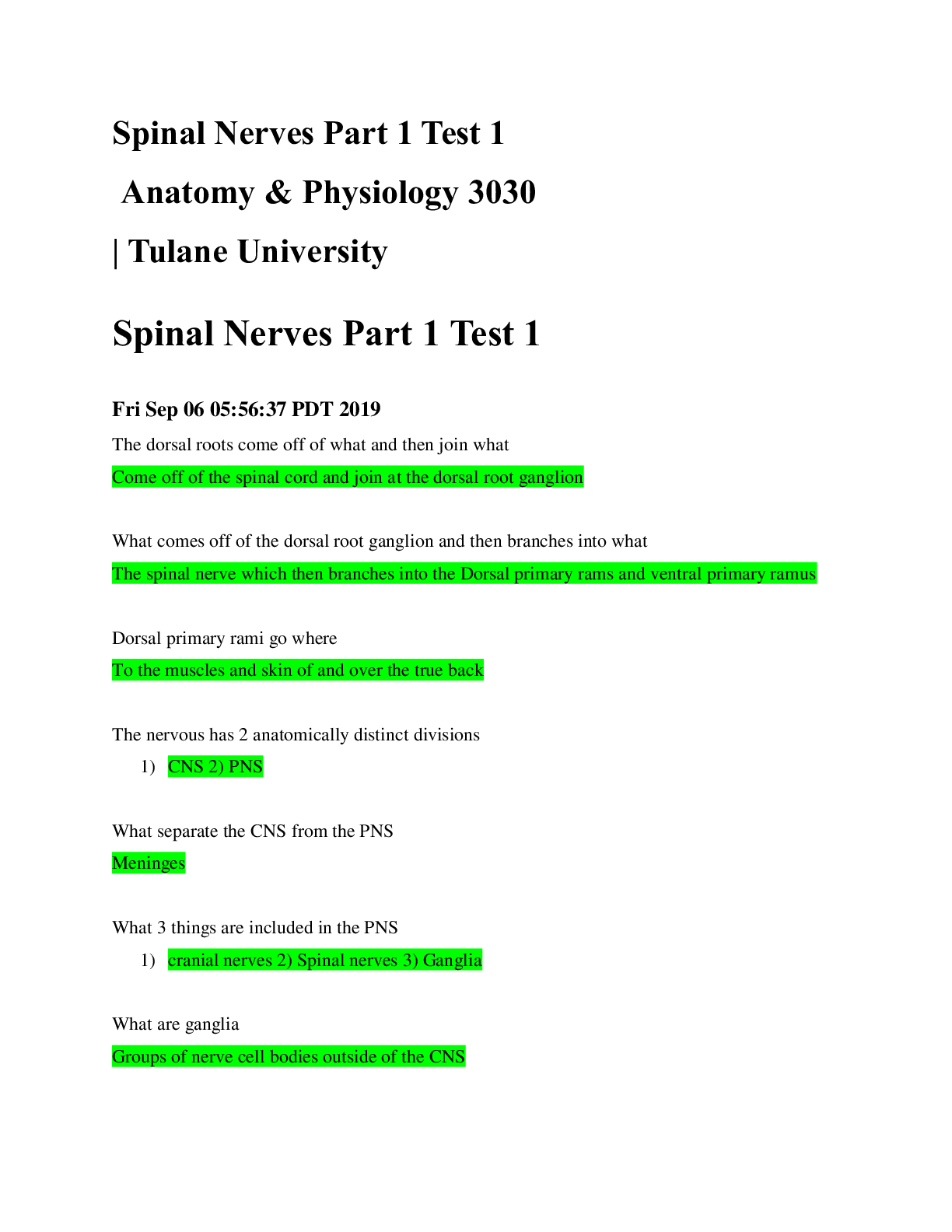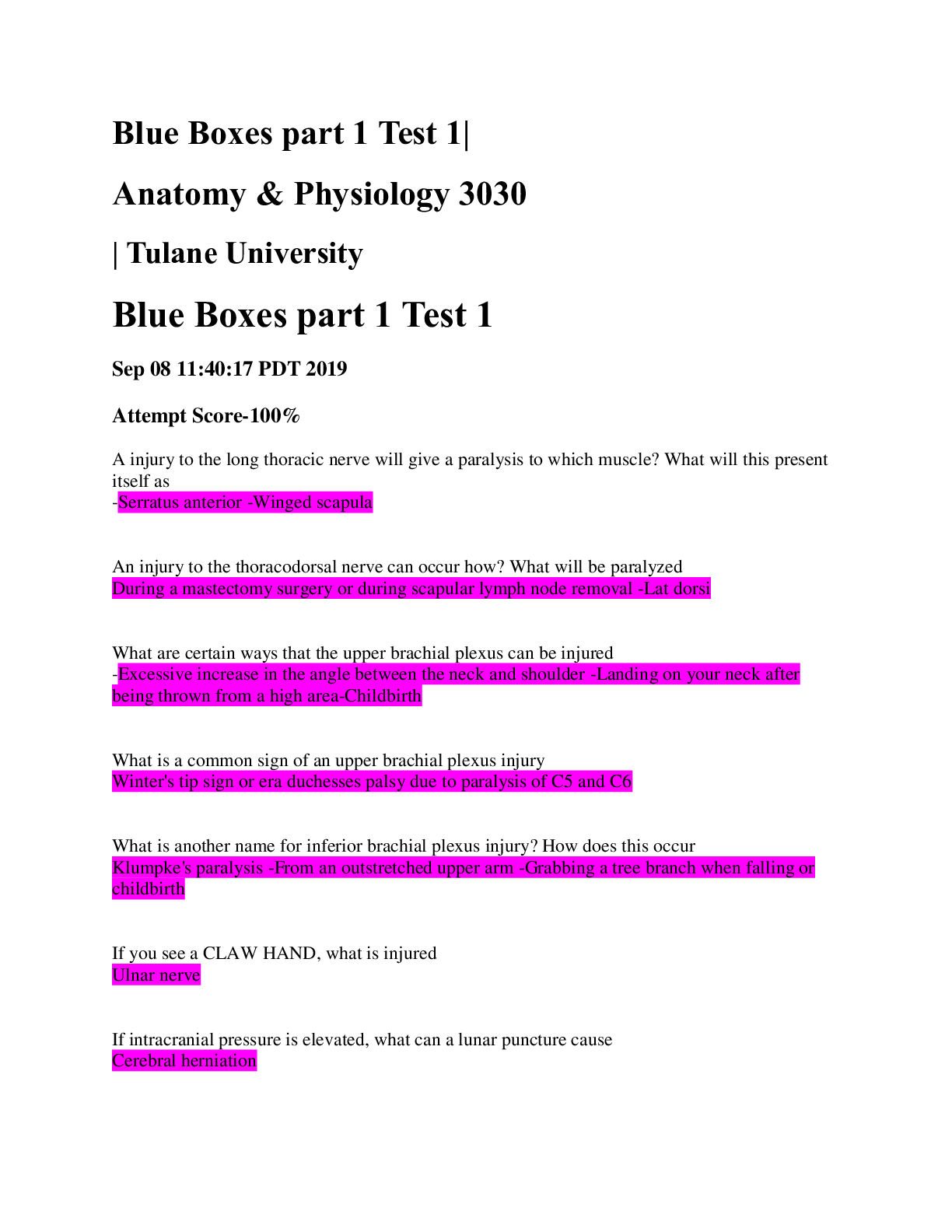Health Care > EXAM > Portage Learning Anatomy & Physiology 2: Module 1 Exam QUESTIONS WITH VERIFIED ANSWERS (All)
Portage Learning Anatomy & Physiology 2: Module 1 Exam QUESTIONS WITH VERIFIED ANSWERS
Document Content and Description Below
Portage Learning Anatomy & Physiology 2: Module 1 Exam This is a bundle of axons found in the peripheral nervous system. ans: nerve This part of the autonomic system accelerates the heart beat a... nd increases breathing rate. ans: sympathetic nervous system The ventral root of a nerve contains what type of neurons? ans: motor (efferent) This part of a neuron conducts nerve impulses towards the cell body. ans: denderites A neuron going to the bicep of the forearm is part of the: ans: A. Central nervous system B. Peripheral nervous system C. Autonomic system D. Somatic system E. A&C Correct! F. B&D The neuron pictured, below, is best described as: ans: A) Bipolar B) Correct! Multipolar C) Unipolar D) Pseudounipolar True or false: Neurons do not physically touch one another. ans: True Neurons do not physically touch. They are separated by synapses. Describe the synthesis and storage of neurotransmitters. ans: The neuron cell body manufactures neurotransmitters, which are stored in secretory vesicles at the end of axon terminals. An afferent neuron carries information: ans: A) From the central to the peripheral nervous system B) Correct Answer From the peripheral to the central nervous system C) Within the central nervous system D) Within the peripheral nervous system A presynaptic neuron would be found: ans: A) Correct Answer Before the synapse B) After the synapse C) Inside the synapse D) Only in the peripheral nervous system What is the location and function of Satellite cells? ans: Location: Peripheral nervous system (PNS) Function: Regulation of environment of neuron cell bodies A patient's spinal cord was severed in a car accident. Would the patient be expected to regrow axons in their spinal cord? Why or why not? ans: No; Only peripheral system axons are capable of regeneration. The spinal cord is in the central nervous system. Name and describe what is occurring in the neuron cell membrane in section 4 of the diagram. Include the charge of the membrane during this phase. ans: Afterpolarization (Hyperpolarization) Potassium gates are slow to close and there is an undershoot of the potential. The charge drops below -70mV and then returns to -70mV once at resting state again. At rest, a neuron plasma membrane is: ans: A) 0 mV B) +40 mV C) Correct! Polarized (around -70mV) D) Depolarized Which of the following is false concerning the sodium-potassium pump? ans: A) It maintains the resting phase of an axon. B) For every three sodium ions pumped out, two potassium ions are pumped in. C) It must remain in constant operation to maintain the resting state. D) Correct Answer The overall effect is a negative charge on the outside of the membrane. (False, the effect of the pump is a negative charge inside the membrane, positive on the outside.) True or false: A sensory neuron is signaling the body of extreme pain. This means that the strength of the action potential is greater than usual. Explain your reasoning. ans: False There is no variation in the strength of action potentials. (It is an all-or-nothing response). There is variation in the number and frequency of neurons firing. Which of the following statements is true concerning the neuromuscular junction? ans: A) The NMJ terminates on neurons within the brain and spinal cord. B) Correct! The NMJ terminates on a muscle fiber. C) The NMJ terminates on a presynaptic motor neuron. D) The NMJ does not have a synapse. How is a message sent from one neuron to another? ans: There is a minute fluid-filled space, called a synapse, between the axon terminal of the sending neuron and the dendrite of the receiving neuron. When a nerve impulse reaches the end of an axon, neurotransmitters are released into the synapse. These bind with a receptor on the next neuron, opening Na+ gates in the receiving dendrite which causes depolarization and the impulse is carried. What neurotransmitter is found at the neuromuscular junctions? ans: acetylcholine True or False: Action potentials travel in multiple directions within the same neuron. ans: False (only one direction in the same neuron) True or False: Reflexes occur only with conscious intervention from the brain. ans: False Fill in the blank: In a reflex, the ____________ neuron conducts nerve impulses along a pathway towards the central nervous system. ans: afferent or sensory Where is the integration center of a reflex located? ans: CNS (central nervous system) Which of the following statements is false about reflexes? ans: A) Reflexes do not require higher levels of voluntary processing from the brai [Show More]
Last updated: 2 years ago
Preview 1 out of 3 pages

Buy this document to get the full access instantly
Instant Download Access after purchase
Buy NowInstant download
We Accept:

Reviews( 0 )
$8.00
Can't find what you want? Try our AI powered Search
Document information
Connected school, study & course
About the document
Uploaded On
Sep 16, 2022
Number of pages
3
Written in
Additional information
This document has been written for:
Uploaded
Sep 16, 2022
Downloads
0
Views
53






















.png)



